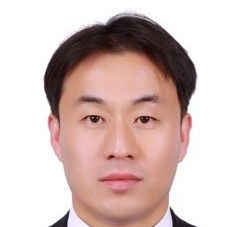Selected Papers from the K-TRIB2020
A special issue of Lubricants (ISSN 2075-4442).
Deadline for manuscript submissions: closed (20 December 2020) | Viewed by 4014
Special Issue Editors
Interests: low friction and wear coatings; nanotribology; functional coatings
Special Issues, Collections and Topics in MDPI journals
Special Issue Information
Dear Colleagues,
The importance of tribology has been increasingly emphasized over the years as we face critical technical and social issues related to energy and the environment. In this regard, tribology will continue to play a vital role in the development of novel technologies to maximize the efficiency as well as performance of machines and devices. In this Special Issue of Lubricants, selected papers from the 2nd Korea-Tribology International Symposium (K-TRIB2020) will be published. Contributions can be articles describing original research, methods, hypothesis and theory, opinions, and more traditional reviews. A 20% discount on the Article Processing Charges is available for all the attendees of K-TRIB2020. The aim of K-TRIB 2020 is to provide a platform for scientists and engineers from all over the world to share the latest information on a wide range of topics relevant to tribology. The topics will include all topics related to lubricants as well as other major themes of tribology.
Prof. Dr. Dae Eun Kim
Prof. Dr. Sung-Ho Hong
Guest Editors
Manuscript Submission Information
Manuscripts should be submitted online at www.mdpi.com by registering and logging in to this website. Once you are registered, click here to go to the submission form. Manuscripts can be submitted until the deadline. All submissions that pass pre-check are peer-reviewed. Accepted papers will be published continuously in the journal (as soon as accepted) and will be listed together on the special issue website. Research articles, review articles as well as short communications are invited. For planned papers, a title and short abstract (about 100 words) can be sent to the Editorial Office for announcement on this website.
Submitted manuscripts should not have been published previously, nor be under consideration for publication elsewhere (except conference proceedings papers). All manuscripts are thoroughly refereed through a single-blind peer-review process. A guide for authors and other relevant information for submission of manuscripts is available on the Instructions for Authors page. Lubricants is an international peer-reviewed open access monthly journal published by MDPI.
Please visit the Instructions for Authors page before submitting a manuscript. The Article Processing Charge (APC) for publication in this open access journal is 2600 CHF (Swiss Francs). Submitted papers should be well formatted and use good English. Authors may use MDPI's English editing service prior to publication or during author revisions.
Keywords
- Fluid film lubrication
- Lubricants
- Additives
- Grease
Benefits of Publishing in a Special Issue
- Ease of navigation: Grouping papers by topic helps scholars navigate broad scope journals more efficiently.
- Greater discoverability: Special Issues support the reach and impact of scientific research. Articles in Special Issues are more discoverable and cited more frequently.
- Expansion of research network: Special Issues facilitate connections among authors, fostering scientific collaborations.
- External promotion: Articles in Special Issues are often promoted through the journal's social media, increasing their visibility.
- e-Book format: Special Issues with more than 10 articles can be published as dedicated e-books, ensuring wide and rapid dissemination.
Further information on MDPI's Special Issue polices can be found here.






